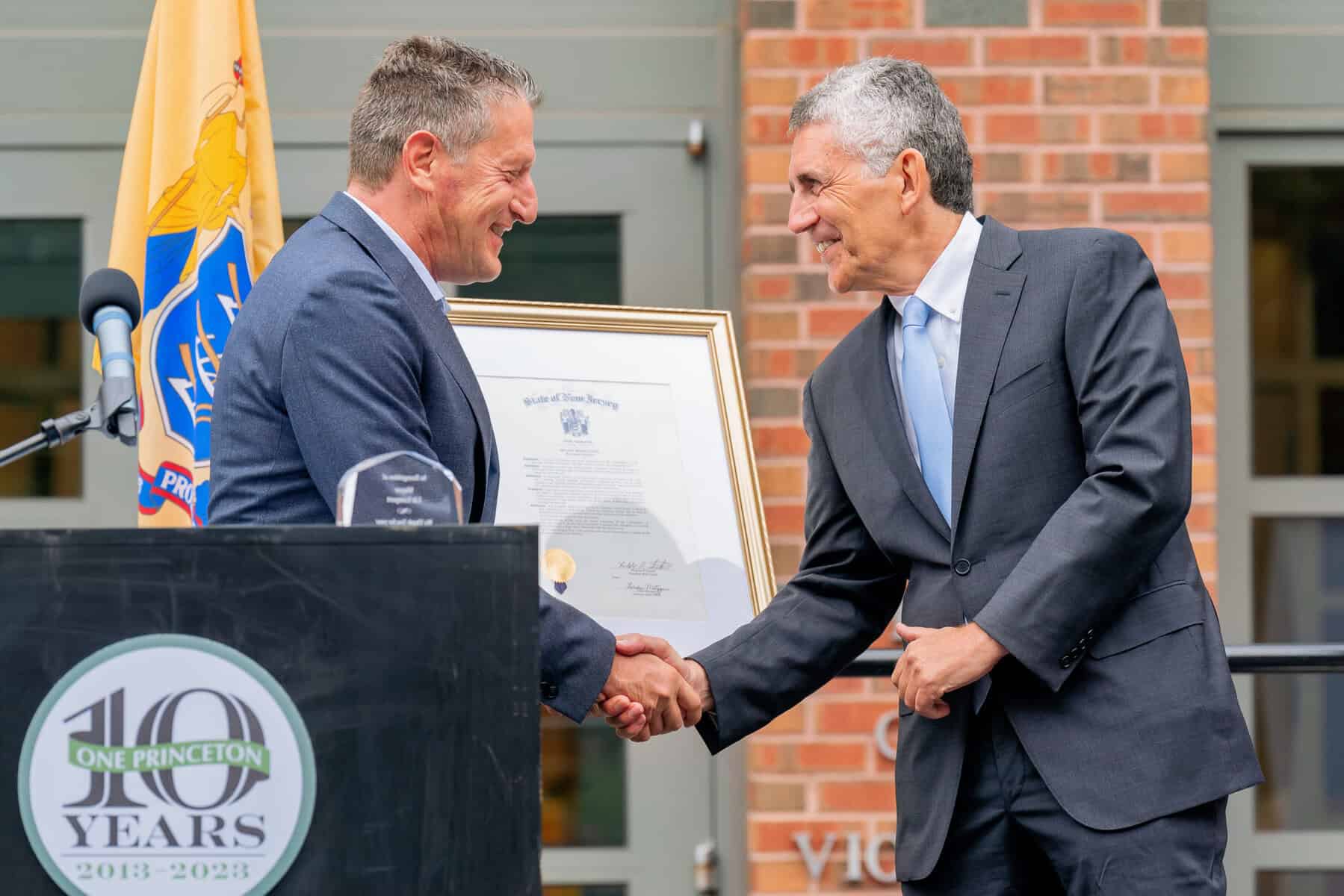Liz Lempert, the first mayor of the Municipality of Princeton, was among honorees at a celebration of the 10th anniversary of the consolidation of the former Princeton Borough and the former Princeton Township.
Members of the first Princeton Council – the name of the municipal governing body created after consolidation – and members of the Joint Consolidation Commission Study and the Transition Task Force, also were honored at the Sept. 28 ceremony.
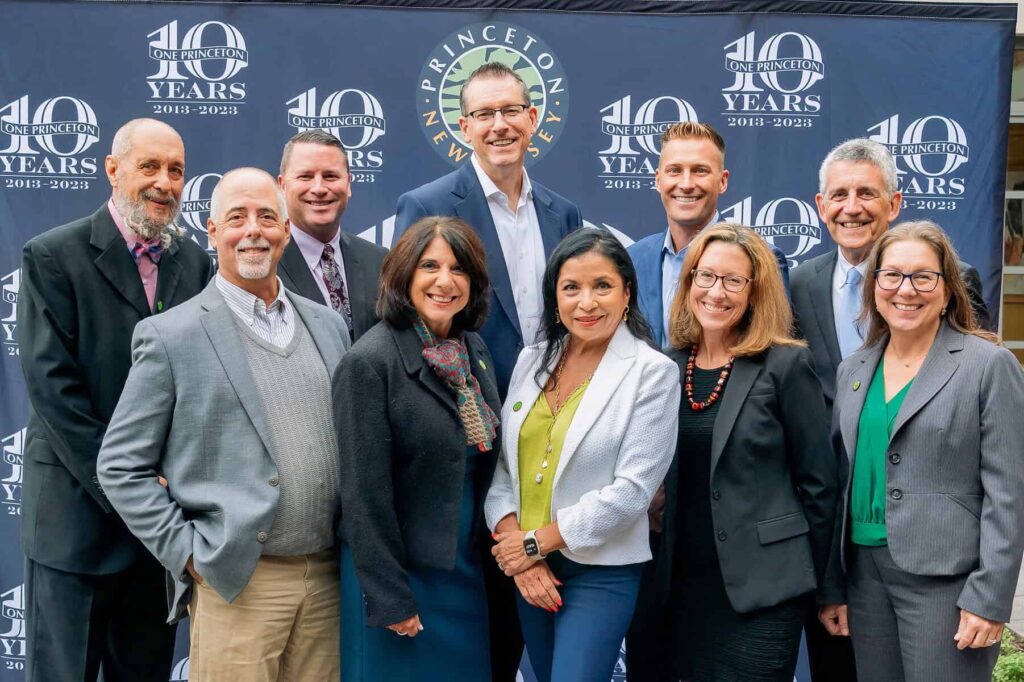
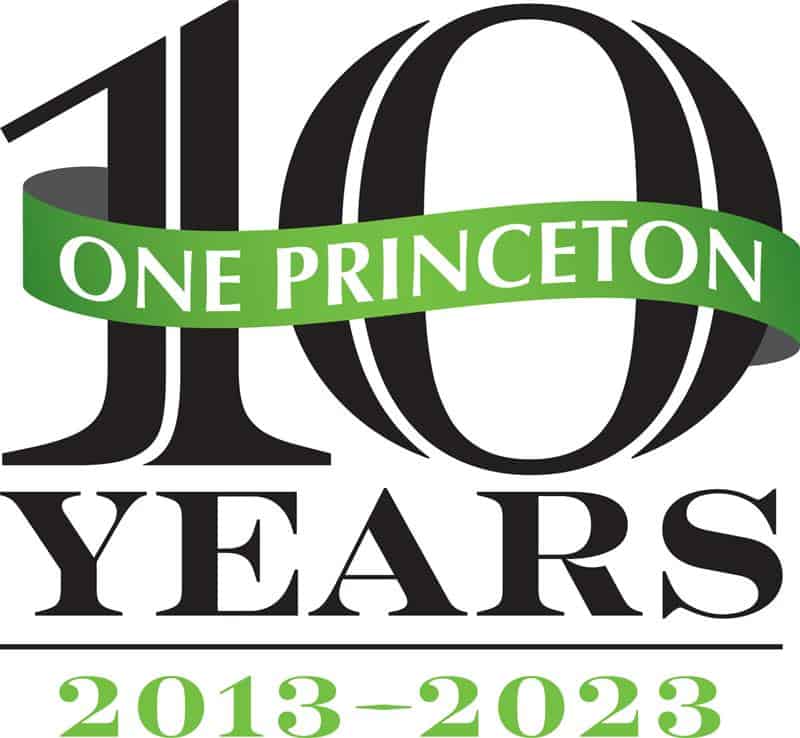
The towns consolidated in 2013, following voter approval. It was the fourth time that the proposal to merge the former borough and the former township had been raised since 1952.
Princeton Councilwoman Michelle Pirone Lambros welcomed attendees to the ceremony, which was held on the plaza in front of the Witherspoon Hall municipal building at 400 Witherspoon St.
“We are here to celebrate a decade since Princeton’s landmark consolidation,” Pirone Lambros said. “This wasn’t simply a blending of borders, but an act that forged a stronger, more vibrant Princeton.”
The two towns were facing challenging circumstances prior to consolidation.
“It was a struggle to meet the quality of services required by a growing Princeton, and to strategically address complex issues,” she said.
That’s why 10 years ago, officials of the two towns recognized that consolidation offered a chance to cut costs and to enhance municipal services.
“Change is never easy,” Pirone Lambros said. “It takes leadership, vision and courage to push forward with any new endeavor, be it large or small.”
The work that was done to make the dream of “one Princeton” a reality continues to be built on today.
“We hope that Princeton will continue to be a model for other municipalities across New Jersey who can realize the advantages of consolidation,” Pirone Lambros said.
Mayor Mark Freda reeled off a list of the accomplishments that resulted from consolidation – from a 10% reduction in municipal staff that has saved about $2 million in salaries annually, to a nearly 20% decline in the town’s gross debt and a nearly 60% increase in its surplus funds.
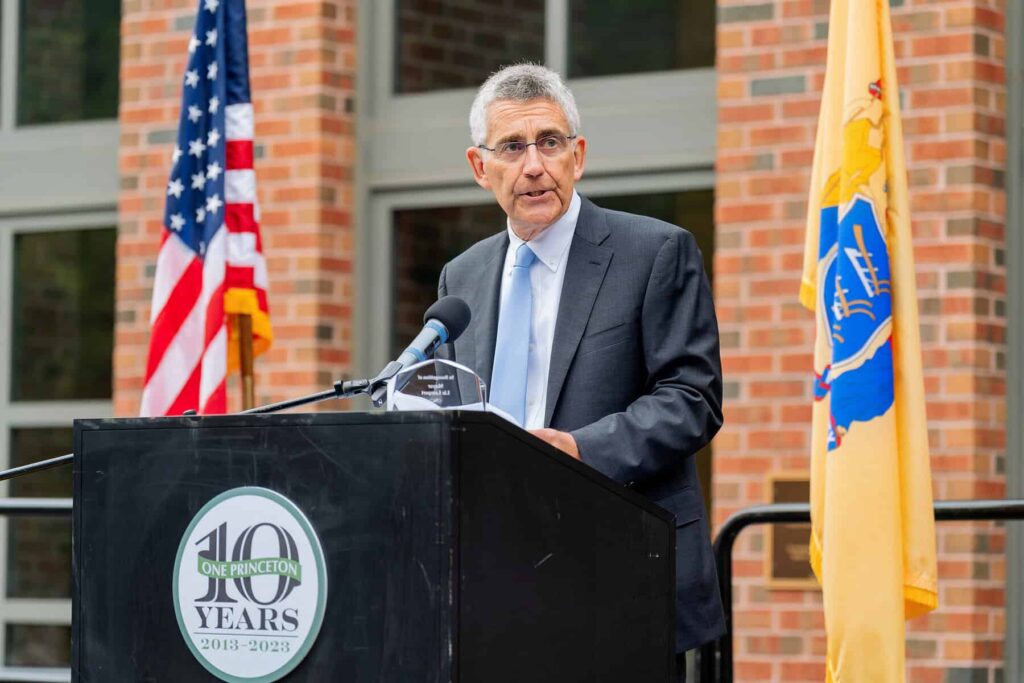
The combined Health and Human Services Department has led to an increase in services to include vaccination clinics, improved child health clinics and social services, the mayor said.
A single, consolidated Princeton Police Department means there are more officers on patrol, he said.
“Police can respond to emergencies more quickly and effectively. There are more resources to investigate crimes and keep the community safe.”
The consolidated Recreation Department has expanded programs and enhanced its facilities to be more accessible. There is something fun for everyone – from children to senior citizens to people with different abilities, he said.
The newly combined town adopted a climate action plan that will help Princeton to become more climate resilient by reducing its carbon emissions and promoting social equity, he said.
The heart and soul of a community are its residents, Freda said, noting they attend the meetings, serve on the volunteer boards and let officials know what is important to them.
“So, here’s to you, Princeton, and here’s to another decade of progress,” he said.
State Sen. Andrew Zwicker (D-16), whose state Senate district includes Princeton, praised Princeton for its consolidation and presented officials with a state Senate resolution.
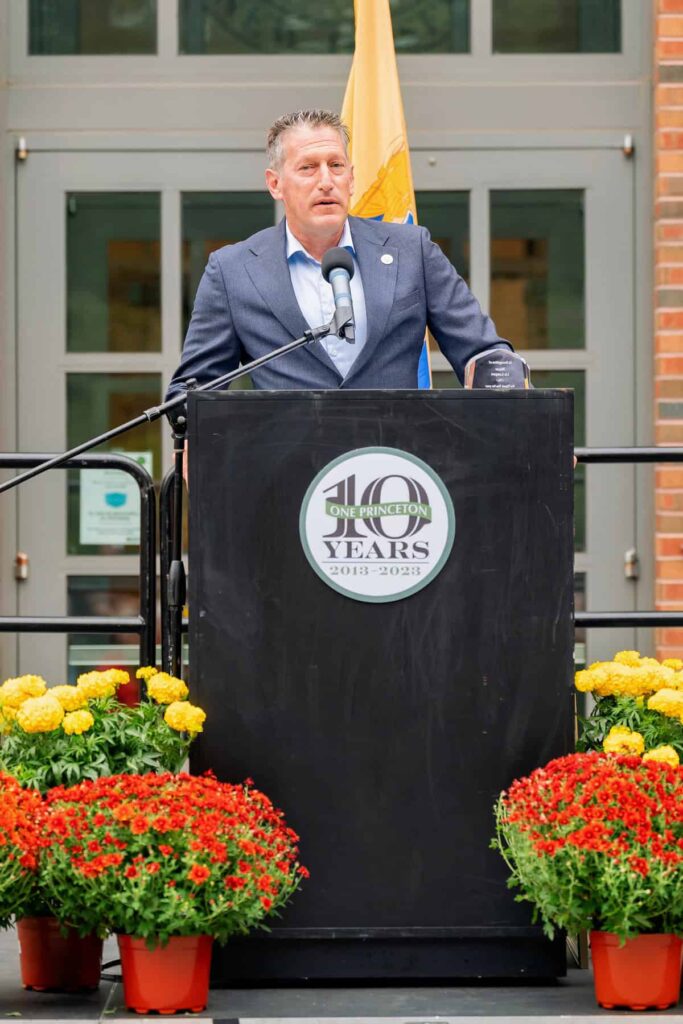
“What Princeton has done is not just good for Princeton, but for New Jersey,” he said. “It shows how to lead.
“The consolidation of Princeton is at the forefront of what New Jersey needs to improve. We are still waiting to see other towns replicate consolidation – not just to save money, but to improve the quality of life.”
In a lighter moment, Zwicker compared Princeton to a fine wine. Holding up bottles of wine, he compared the former Princeton Township to a white wine and the former Princeton Borough to a red wine.
“What happens when they consolidate? ‘One Princeton’ is a rose (pink wine). As ‘One Princeton’ goes, so goes the rest of New Jersey,” he said.

